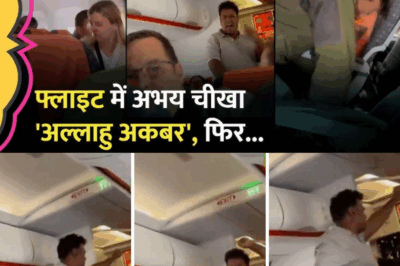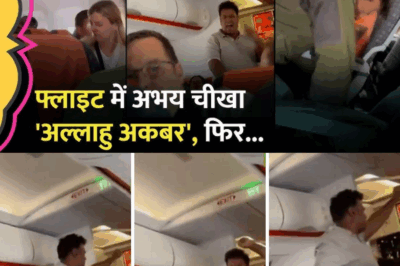Torrential Monsoon Rain Wreaks Havoc Across North India: Floods, Landslides, School Closures, and Stranded Pilgrims
Disaster struck Northern and Central India this week as relentless monsoon rains unleashed flooding, landslides, and chaos from the heart of Delhi to the hills of Uttarakhand and the valleys of Kashmir. For residents of Delhi-NCR, Thursday morning brought scenes of waterlogged streets and endless traffic snarls as heavy showers overnight turned neighborhoods and highways into lakes. The Indian Meteorological Department had sounded the alarm, issuing a heavy rain, thunderstorm, and lightning alert for July 31, while authorities in Haryana escalated warnings to a red alert. The result: hours of intense rain that continued into the morning, submerging key districts and disrupting daily life.
The impact in Delhi was immediate and severe; areas across the capital and adjoining NCR cities saw roads vanish under surging water. Commuters found themselves stranded, traffic piled up in every direction and authorities struggled to direct the flow. Yet Delhi’s plight was just the beginning. Across northern and central India, the monsoons laid bare the vulnerability of infrastructure, the unpredictability of nature, and the resilience of millions now facing one of the wettest weeks of the season.
Madhya Pradesh is among the hardest-hit states. In Guna and Shivpuri districts, flooding reached crisis levels within hours: rivers Chambal and Sindh overflowed dangerously in the Gwalior and Chambal regions, while in Damoh, at least 24 villages were encircled by floodwaters and nearly 500 homes reported damaged or destroyed. The capital city, Bhopal, and its surrounding districts struggled against heavy rainfall as streets and neighborhoods disappeared under pouring water. In a desperate situation in the Kolaras area of Shivpuri, 30 schoolchildren became stranded after a sudden surge in a local stream halted their school buses mid-route. As rescue videos circulated on social media, officials confirmed the children were moved to safety in the village head’s house. Local sarpanches, disaster response teams, and the Chief Minister himself all called in military helicopter support, hoping to rescue those still marooned as waters continued to rise.
Meanwhile, Rajasthan faced an escalating emergency of its own. Districts like Sawai Madhopur witnessed the collapse of small bridges, while the Parvati River flooding in Kota wiped out crucial roadways. The direct consequences: road links between Rajasthan and Madhya Pradesh snapped, the national highway NH 552 closed to all traffic, and over a dozen towns isolated. Many villages, including Itawa and Khatauli, saw up to half a meter of water on roads. Larger Rajasthan cities—Jaipur, Kota, Dausa, Alwar, and Bharatpur—struggled through some of the worst flooding and infrastructural collapse in years, forcing local authorities to shut schools and colleges in 14 districts for at least the next two days. In Jaipur itself, even the official residences of the Director General of Police and the Chief Secretary were not spared, with both experiencing major flooding for the first time in recent memory. Elsewhere, in Dausa, the Morel Dam was reported to have overflowed precariously, prompting additional evacuation alerts as downstream communities braced for further inundation.
Moving north, the situation was no less grim. Hills and mountains brought their own set of dangers: landslides, blocked roads, and destruction of livelihoods. In Uttarakhand, a fatal combination of torrential rain and repeated landslides blocked highways and village roads, isolating communities and disrupting the annual Kedarnath yatra. A massive 70-meter section of the Gaurikund highway near Sonprayag vanished, forcing organizers to suspend one of India’s holiest pilgrimages. Nearly 3,000 pilgrims found themselves stuck in Sonprayag, while 350 more had to be evacuated from Gaurikund as rain-swollen rivers and collapsed roads made all movement perilous. Authorities estimated that clearing and repairing the highway—even with all available manpower and machinery—could take two to three days. The route to Yamunotri Dham faced a similar crisis after falling boulders blocked the way for nearly an hour, further underlining the risks faced by travelers, devotees, and residents alike.
Himachal Pradesh, too, endured the full fury of the monsoon. In Chamba district’s Jandrogh panchayat, a devastating cloudburst struck, destroying everything in its path. The villages of Bhagatsiyar and Dhaliyar suffered major damage, while in Chamoli, landslides wrecked two homes and put others at extreme risk. The famous Madhyameshwar Dham walking route in Rudraprayag district lost its only pedestrian bridge—a crucial lifeline for hundreds of devotees and locals. Across Jammu and Kashmir, incessant rains triggered landslides at multiple locations, some fatal. Only a few days prior, landslides had taken four lives; on Thursday, tragedy struck again as two teachers in Udhampur were swept away trying to cross a raging stream in Ramban district. In Anantnag, a falling tree killed one man, while in Handwara, a government school teacher died when a bus skidded and overturned on rain-slick roads, injuring many others. In Ganderbal, disaster nearly struck again when a bus carrying ITBP jawans plunged into the Sindh River; fortunately, all personnel were rescued in time. The Amarnath yatra—a spiritual and logistical feat involving tens of thousands of pilgrims—was also temporarily suspended, with officials restricting travel to the Baltal route only after extensive damage closed off the Pahalgam trail, and poor weather forced additional stops. At last count, nearly 400,000 pilgrims had already offered prayers at the icy cave shrine, undeterred by the elements.
Back in the national capital, Delhi’s July rainfall has shattered records. Reports indicate over 150.5 mm of rain by July 30, well above normal figures and enough to paralyze city operations if not properly managed. The Safdarjung weather station reported an astounding 220.1 mm, with rain recorded on 21 different days this month alone—a sobering figure given the rapid expansion of Delhi’s urban sprawl and its persistent flooding dilemmas. The result has been endless traffic jams, surging complaints about the municipal response, and a nervous population waiting anxiously for the rains to finally let up.
The effects of the monsoon disaster were felt across everyone: children unable to reach school, police chiefs evacuating their offices, government officials scrambling to restore connectivity to stranded towns and villages, rescue teams mobilizing to save those in life-threatening conditions, and millions watching the devastation unfold on social media and television. Every passing day brought new updates—another bridge wiped out, another rescue underway, another family forced from their home. Heavy machinery worked relentlessly to clear landslides in the hills, while boats ferried people through city streets that became temporary rivers.
With rainfall continuing and alerts still active for multiple states, officials urged residents to remain vigilant. Meteorologists warned that much of North and Central India could expect further intense showers in the coming 48 hours as this latest monsoon pulse moves through. Meanwhile, state governments issued repeated advisories about landslide- and flood-prone regions, closing schools and cancelling non-essential travel to minimize risk.
India’s monsoon season has always been a time of anxiety and awe—bringing life to the fields and relief to farmers, while threatening destruction at its extremes. This year, the balance has tipped dangerously toward chaos. But even as nature tests the limits of modern infrastructure and human resilience, the hope remains that preparedness, community spirit, and timely rescue efforts will help the nation weather the storm.
For now, families across Delhi, MP, Rajasthan, Uttarakhand, Himachal, Jammu & Kashmir, and beyond cling to updates on the radio and TV, praying for safety, sunshine, and a swift return to normal. As news crews and disaster management agencies continue their work, this year’s devastating monsoon is a stark reminder that nature’s fury can strike anyone, anywhere, at any time.
We will keep a close watch and bring you the latest updates as this story continues to unfold.
News
Panchayat Actor Asif Khan Suffers Heart Attack at 34: Why are 30-Somethings Dying of Heart Disease in India?
Panchayat Actor Asif Khan Suffers Heart Attack at 34: Why are 30-Somethings Dying of Heart Disease in India? Bollywood and…
Karishma Kapoor in Legal War for Her Children’s Share in Late Sanjay Kapoor’s Billion-Dollar Fortune
Karishma Kapoor in Legal War for Her Children’s Share in Late Sanjay Kapoor’s Billion-Dollar Fortune Bollywood is once again shaken…
Suhana & Aryan Khan: Why Shah Rukh Khan’s Kids Are Struggling in Bollywood – Shocking Revelations Inside!
Suhana & Aryan Khan: Why Shah Rukh Khan’s Kids Are Struggling in Bollywood – Shocking Revelations Inside! When you belong…
Viral Air Rage on EasyJet: Passenger Shouts “Bomb on Plane”, Taken Down by Hero Traveler — What Really Happened?
Viral Air Rage on EasyJet: Passenger Shouts “Bomb on Plane”, Taken Down by Hero Traveler — What Really Happened? Luton-Glasgow…
Katrina Kaif and Vicky Kaushal Expecting First Child: Bollywood’s Most Awaited Baby News Shakes the Industry
Katrina Kaif and Vicky Kaushal Expecting First Child: Bollywood’s Most Awaited Baby News Shakes the Industry It’s a moment that…
Inside the Battle for Sanjay Kapur’s Legacy: Karisma Kapoor, Divorce, and the 3,000 Crore Inheritance Storm
Inside the Battle for Sanjay Kapur’s Legacy: Karisma Kapoor, Divorce, and the 3,000 Crore Inheritance Storm The death of industrialist…
End of content
No more pages to load











